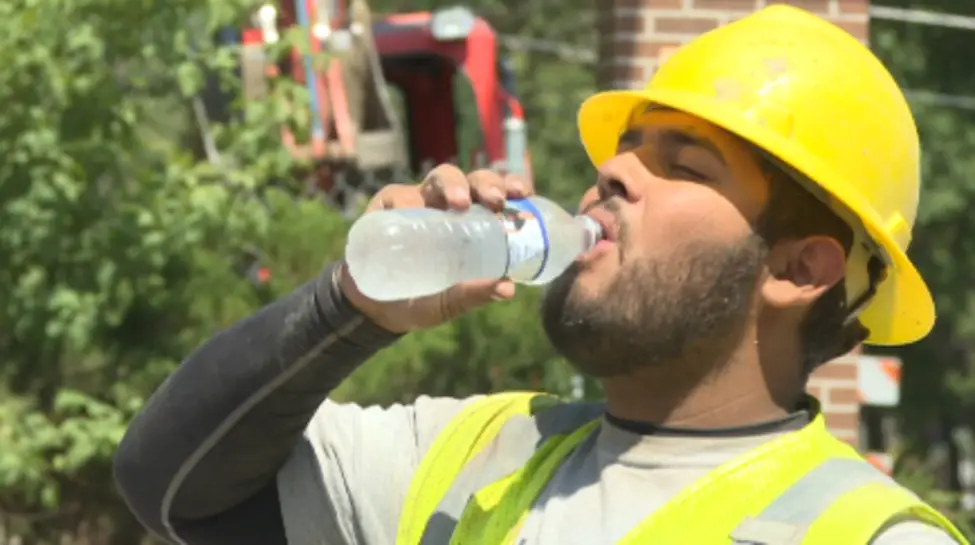Construction workers have no choice but to spend many hours under the scorching heat of the blistering sun. Unlike a few lucky construction professionals who manage to get a steady desk job, you may have to spend a substantial amount of time outside in harsh conditions. With summer just around the corner, it is important to stay hydrated at Jobsite in scorching hot conditions.
Construction, as a labor-intense and a risky industry, is responsible for a large share of fatal injuries and illnesses at Jobsite. The construction workers are involved in hard-hitting jobs, risky maneuvers, and are exposed to hazardous chemicals all around. It is important to remember that heatstroke takes many lives every year, especially for construction workers.
Also Read: How the construction industry is feeling the pinch of the labor shortage?
Although over recent years, construction employers are considerate to take care of their employees and workers by not only taking appropriate protective measures against a harsh environment but also by monitoring their health in real-time. This is in recognition of the fact that success and safety go hand-in-hand.

Snags of working in the heat
To deliver, the best possible product and to stay focused, all construction professionals must be equipped with appropriate apparel against harsh weather conditions. Extreme weathers, especially sweltering heats, take your attention away from the job and thus you can’t work yourself through your fullest potential.
While working under the heat, you’re exposed to direct sunlight as well as additional sources of heat like nearby ovens, hot engines, and manufacturing kilns. Things can even go worse with elevated humidity levels, reduced airflow, and increased physical activity. In such condition, wearing heavy protective clothing, hard helmet, and safety shoes is a nightmare. But by following simple tricks, described below, you can prevent heat-related illnesses at the job site.
Also Read: Important Aspects of Construction Projects
Quick Top tips to stay comfortable in extreme heats
Access the risk
Keeping in view your age, nature of your job and humidity level makes a quick assessment to effectively manage the risk of occupational heat stroke. The best way to determine your specific risk factor is by speaking with a doctor about your body’s hydration requirement under a definite set of job site conditions. The doctor may provide you a urine color chart that can help you gauge the threat of dehydration.
Staying Hydrated
Working under the summer heats can lead to a lot of sweating and there would the loss of water and electrolytes from your body. Although sweating is a natural biological reaction to cool your core body temperature these electrolytes – a form of salts like potassium and sodium chloride, and an important element for the effective functioning of your body.
Thus you should stay hydrated by taking in plenty of water. A great idea is to keep a cooler on hand stoked with cold water so that workers can quickly get a drink or pour water on their body. As a general guideline, if you’re performing physical activity in moderate heat, take one cup of water every 15-20 minutes. But drink a cup of water every 10-15 minutes when you’re involved in highly strenuous activities under high temperatures. Bring your food and especially salty snacks to help your body maintain the electrolyte levels.
Also Read: Things To Avoid While Choosing Home Contractors to Renovate Your House
Staying Cool
When you’re physically active, your body produces enough heat that can be severely elevating your chances of getting a heat stroke. In such conditions, you should take steps to cool down your body before a problem arises.
Wear lightweight protective apparel: The best way to stay cool is by wearing lightweight and light-colored clothing with reduced heat absorption. Another good idea is to wear vests that have pockets for placing cold packs. Keep your head and neck covered with a water-soaked cloth piece.
Frequent short breaks: Take plenty of short breaks under the shade or even in an air-conditioned room so to cool down the temperature of your body. Temporary outdoor shelters like shade canopies and pop-up tents can help provide some relief from heating elements. Set up fans in such shades to get the breeze going.
Summer heat can be dangerous
Heat strokes are dangerous but by following simple safety precautions, described prior, everyone can help prevent it and stay healthy at Jobsite. However, if you or anyone starts to show signs of heatstroke or overheating, you need to take action. When you’re outside, find a shady area where you can immediately start hydrating. A cool shower or bath can help your body cool down but seek medical assistance right away.


